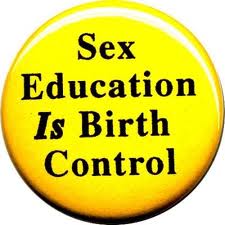We’re lousy at sex education.
In the mid-1990s, California embraced sex education that teaches students the importance of waiting until they’re older to have sex, but also the value of using protection if they don’t wait.
Compare this with classrooms in Texas, where messages around contraception — if they’re delivered at all — have sometimes been shrouded in negativity and misinformation.
Which method has proved most effective?
The numbers are telling: Texas had the fourth-highest teen birth rate in the nation while California was 29th in 2010.
California reduced its numbers despite sharing Texas’ demographics and sky-high teen birth rates in the early ’90s. And while more teens have abortions in California than in Texas, California reduced those at the same time it brought down teen births.
California teachers freely promote condom use and other birth control methods. They demonstrate condom use in class. Classroom talk is frank and open. Many schools have free condom handout programs.
In Texas, where a state code demands a heavy emphasis on abstinence, teaching tends to be more constricted. Condoms can’t be distributed as part of instruction.
Across the U.S. there are essentially two types of sex ed curricula — comprehensive programs that promote abstinence and contraception, and programs that promote only abstinence, many of which historically cast contraceptive use in a negative light, if it was included at all. Texas has been called the “poster child” for the latter.
But the buzzword in sex education now is “evidence-based” — programs that are proven to positively change teen behavior — most of which are comprehensive, at least for now.
As the tide turns toward such rigorously tested programs, once firm lines are blurring. Some so-called abstinence-only programs teach more than “just say no” — decision-making skills and the like — and some now address contraception in a more neutral way. Meanwhile, some so-called comprehensive programs spend more time teaching abstinence than contraception.
In Texas, parents, teachers and administrators are rethinking sex education.
It’s a fairly long story, and it’s worth your time to read. As we know, there are more factors involved in the teen pregnancy and birth rates than just the quality of sex education, but we’re not in good shape with any of them. You might also be surprised to learn that “abstinence only” sex education can be evidence-based, too. I have philosophical issues with the concept of “abstinence only”, but if such a curriculum can be shown to be effective in reducing teen pregnancy and STD transmission, I can live with it.
One more thing:
Teaching birth control, especially in middle school, “is a sad message, almost like giving up,” said one mother who asked not to be named so as not to identify her children. Her two teen sons took vows to remain virgins until marriage.
“Teaching that condoms provide safe sex isn’t true,” she said. “But the real problem is it makes you think you’re entitled to do whatever you want. You’re not entitled to have sex just because you want to.”
Kyleen Wright, president of the Texans for Life Coalition, agreed.
“We don’t tell kids, ‘Try not to be too fat or too drunk when you drive or just smoke a little bit,’” she said. “In Texas, we have a clear and singular message. We don’t change that message just because not everyone is getting it.”
But Cheyenne Armendariz, 12, who attends New Frontiers, said kids can discern the difference between information and permission. “I mean, like, duh, we have our own brains,” she said.
You tell ’em, Cheyenne. As the story notes, the facts are on your side. For more information, see these Texas Freedom Network reports.


Pingback: Daily Education Headlines: May 16, 2012 | David R. Taylor-Thoughts on Texas Education